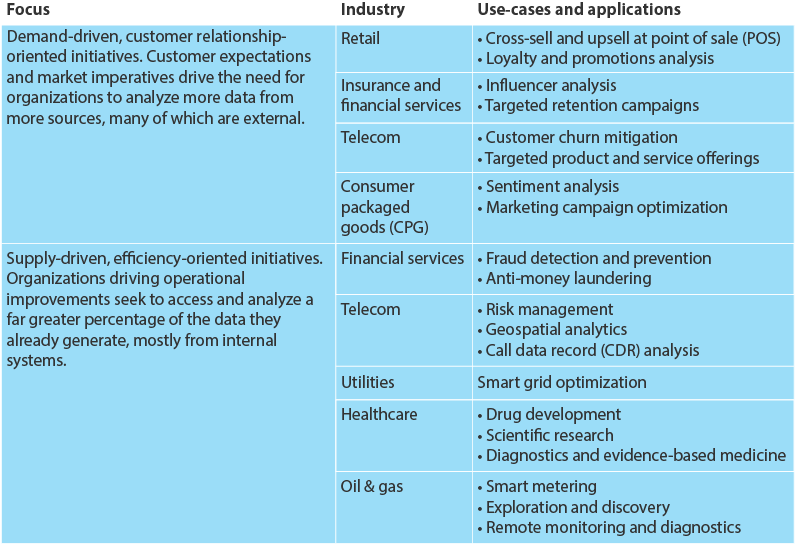Big Data Adoption In Asia Pacific: Clear Use Cases Drive Growing Demand
Some markets and industry sectors in Asia Pacific (AP) were clearly early adopters of big data initiatives, but interest has now spread to almost all subregions and verticals. The reason is simple: More and more organizations now understand the value of data for not only addressing customer demands and expectations but also for responding to changing market dynamics and improving operational efficiency.
The common link across all big data initiatives is an interest in using more types of data, from more sources, to enable timelier, better-informed insights. With that in mind, we’re seeing two common use cases driving big data awareness and investment across industries:
Demand-driven, customer relationship-oriented initiatives
These initiatives are a response to increasing customer expectations for more personalized service. Typically centered on improved customer insight and engagement, organizations are seeking ways to better access and leverage customer data to improve understanding, more effectively personalize relationships, predict behavior, and ultimately deliver improved value via increased customer intimacy. Specifically, the sheer volume of readily available and increasingly accessible data that organizations can leverage — such as location data from mobile devices, apps and personal data on customer preferences and relationships from social networking sites — is driving big data initiatives. Early adopters typically include telcos, retailers, banks, insurance firms, and citizen-oriented eGovernment initiatives.
Supply-driven, efficiency-oriented initiatives
These initiatives are a response to market pressures for organizations — and entire industries — to better access and leverage a greater percentage of the data that is already being generated. The amount of data is increasing exponentially, but organizations’ ability to access and interpret that data is not. Examples include smart grid technology and the expanded use of sensors to create more intelligent systems. But even among organizations with more traditional — albeit disparate — systems like patient monitoring, core banking, financial trading, and oil exploration, market pressures to improve efficiency and effectiveness are driving increased interest in big data. The industries most affected include oil and gas, utilities, healthcare, and financial services.
The following graphic shows the early big data use cases and applications being adopted by industry from our research.

My colleague John Brand and I analyzed big data adoption trends in more detail in our recent report. But, as always, we’d love to hear what you’re seeing within your own organizations.
